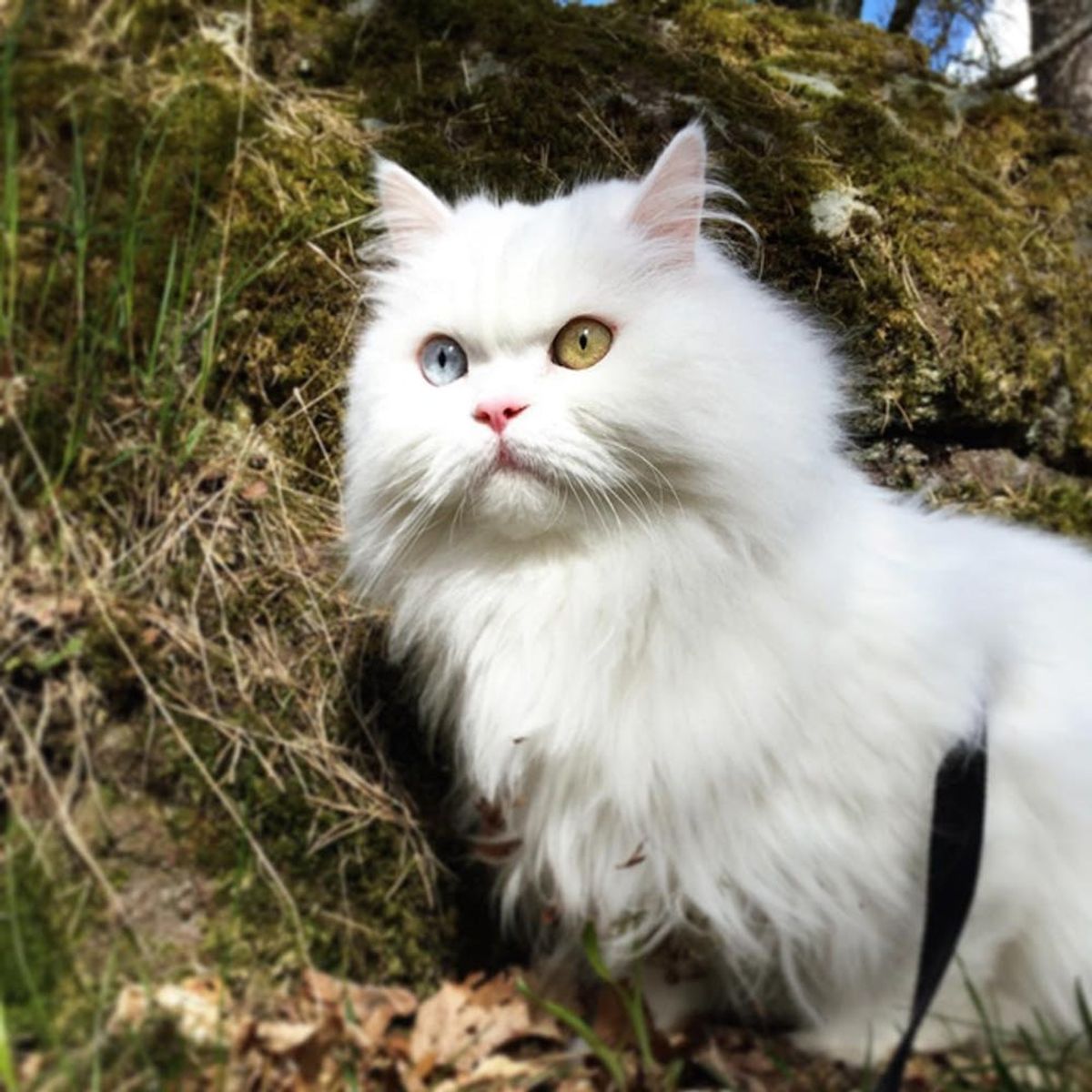Get ready for a-meow-zing adventures with your cat!
These Adventure Cats Slay the Great Outdoors

The only downside to being a cat lady is that you don’t get the pleasure of taking your feline friend on walks, hikes and runs the same way your dog-owning friends do with their pups. Sure, you can create a magical cat palace for her to enjoy, practice yoga together and snuggle in bed watching Netflix, but sometimes the great outdoors just beckon. Luckily, you and your cat are not, in fact, as housebound as you may have thought. There is a whole contingent of adventure cats out there, conquering nature like the lions they (think) they are— and your kitty can be one of them!
With thousands of cats being euthanized in the United States every year, Adventure Cats founder Laura Moss knew she had to try and change those numbers. To help reverse the negative perceptions that cats are lazy, aloof or boring, she started the Adventure Cat Instagram account in March 2015. Within days, she had dozens of submissions from cat owners all over the world. The account has since grown to over 54 thousand followers, and the #adventurecats tag has been used just under 22 thousand times.
Now Moss runs a full Adventure Cats website, alongside a team of people who serve as a resource for adventure cats owners. There’s first aid kit checklists, how-to’s, reader stories, gear recommendations and tons more. It’s informational, inspirational and an incredible resource for all cat lovers, adventurers or not.
We asked Adventure Cats contributors Carolin Jansson of Oslo, Norway and Ashley Crittenden of Lexington, Kentucky for tips and advice on how to try and make our cats lovers of the great outdoors. Jansson has two cats, Marc Jacobs and Margot Tenenbaum, and takes them on mile walks in forests near her home. Crittenden and her seven-month old Niko love Red River Gorge just outside of Lexington.
How to Train an Adventure Cat
Patience is the most important thing you’ll need when it comes to making a cat adventuresome. Jansson remembers when she first took Marc and Margot out on their harnesses when they were young and “they would just lay flat on the ground and refuse to move an inch.”
After figuring out they liked being in the forest (where it’s quiet and calm), rather than a park (with people and cars nearby), the kitties relaxed and began to explore, play and enjoy their walks. To start, take your cat on quick trips to a nearby secluded area, where they can get used to walking on a leash without too many distractions or stressors around.
View this post on InstagramA post shared by @ marcandmargot on
A well-fitting harness and leash are the key gear pieces you’ll need. Jansson says, “it has to be the right size — not too tight, but not too big, so they can wiggle themselves out of it.” Crittenden reminds us that “hydration is important!” so you should definitely bring water and a bowl, no matter how short or long the hike.
Jansson told a story of a particularly magical winter afternoon hike that totally sealed the deal for them: “Perfect snow, blue skies and everything was glistening. We were out for hours and our cats just kept following the path. Marc also likes to chase snowballs, so I threw a couple for him every now and then on the way.” Sounds amazing!
View this post on Instagram2/28/16 Needing a nap after a long day #campingwithcats #OspreyCats #OspreyPacks
A post shared by Niko (@nikothekitten) on
Other tips include: Bring a friend, so there’s someone in front and behind your cat to keep them less distracted, watch for ticks, be prepared to carry your cat in your backpack for some of the trip and have fun! With all that said, it’s important to keep in mind that all cats aren’t made to be adventure cats, and you should never force your kitty to do anything that causes it stress or anxiety.
Do you have an adventure cat? Tag @BritandCo in your next Instagram snap so we can see you on your next outdoor excursion!
(Featured image via @marcandmargot)


















